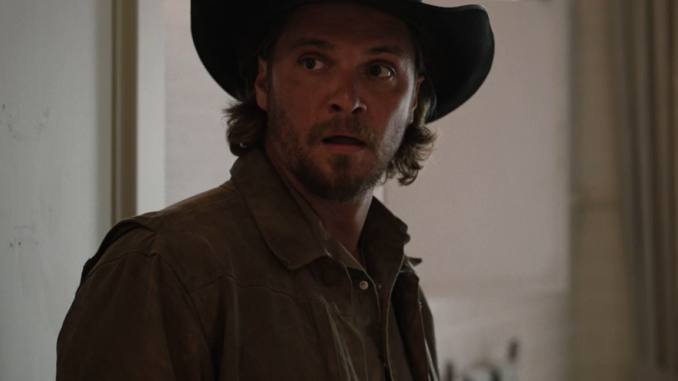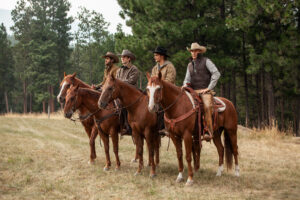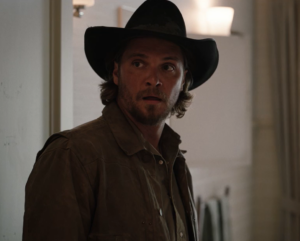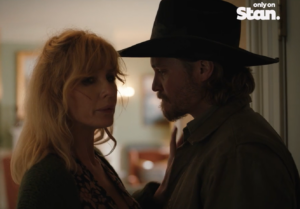
As Yellowstone barrels through its final season, emotions are running high both on screen and among its fans. Two episodes into the second half of Season 5, the stakes have never been higher for the Dutton family. With the shocking death of John Dutton (Kevin Costner) and tensions boiling over, the series is pulling out all the stops. However, one narrative choice has sparked debate among viewers: the heavy use of flashbacks.

Some fans have expressed frustration with the frequent jumps between past and present, calling it a distraction from the main storyline. But according to director Christina Voros, these flashbacks aren’t just a stylistic choice—they’re essential to the story’s emotional weight.
The Purpose of Flashbacks in Yellowstone
In an interview with The Hollywood Reporter, Voros defended the use of flashbacks, explaining their role in highlighting the stakes for the Dutton family.
“I think the flashbacks are continuing to do their job at reminding us all how much is at stake,” she said.
The flashbacks serve as a poignant reminder of the Dutton family’s history, showing how past decisions and sacrifices shaped the current struggles over the Yellowstone ranch. They also deepen the emotional impact of John Dutton’s death by emphasizing his role as the family’s patriarch and protector.
Revisiting John Dutton’s Legacy
The death of John Dutton, revealed in the midseason premiere, has been a game-changer for the series. The patriarch’s sudden and violent demise leaves a power vacuum and throws the remaining Duttons into chaos. Flashbacks to John’s earlier days as a rancher and father provide context for his choices and illustrate the weight of his absence.
These scenes aren’t just about nostalgia; they’re about reinforcing what’s at stake. The Duttons aren’t just fighting for land—they’re fighting for a legacy, one that has been cultivated over generations.
Grief, Vengeance, and the Emotional Core of the Season
One of the central themes of this final season is grief, and the flashbacks play a critical role in exploring how the Duttons process their loss. By juxtaposing moments of past unity with the fractured present, the series highlights how grief fuels the family’s quest for vengeance.

Beth Dutton (Kelly Reilly) is particularly affected. Flashbacks to her complicated relationship with John add layers to her rage and determination to protect the ranch. Meanwhile, Jamie’s (Wes Bentley) history of resentment toward his adoptive father adds further complexity to his current role in the family’s unraveling.
Voros argues that this back-and-forth storytelling enhances the narrative rather than detracts from it. “Grief isn’t linear, and neither is storytelling in a world as complex as Yellowstone,” she said.
Frustration Is the Point
The pacing of these flashbacks has drawn criticism from fans eager to see more of the present-day drama. However, Voros believes that this frustration is intentional—and necessary.
“That’s the point,” she explained. “The flashbacks disrupt the present-day flow because grief is disruptive. It doesn’t follow a neat timeline. It drags you back to moments you thought were long buried, and it demands that you confront them.”
This approach mirrors the characters’ own experiences. For the Duttons, the past is never truly gone. Old wounds, grudges, and traumas continue to shape their decisions and relationships, even as they face new challenges.
A Reminder of What’s at Stake
Beyond their emotional resonance, the flashbacks serve a practical purpose: they remind viewers of the broader stakes at play. As the fight for the Yellowstone ranch intensifies, these glimpses into the past provide context for the family’s unyielding determination to hold onto their land.

The flashbacks also tie into the larger Yellowstone universe, connecting the main series to its spinoffs like 1883 and 1923. By showing how the Dutton legacy was built over generations, the series reinforces why it matters so much to the characters—and to fans.
Balancing the Past and Present
While the flashbacks are essential to the story, striking the right balance between past and present remains a challenge. Some fans have expressed concerns that the flashbacks take up too much screen time, detracting from the main plot.
Voros acknowledges this tension but believes that the payoff will be worth it. “As the season progresses, the connection between past and present will become clearer,” she said. “Every scene, whether it’s in the past or the present, is driving toward the same conclusion.”
The Emotional Journey Ahead
As Yellowstone approaches its series finale, the flashbacks are likely to remain a key part of the storytelling. For fans who may find them frustrating, it’s worth remembering that this frustration mirrors the characters’ own struggles.
The final season of Yellowstone isn’t just about resolving plotlines—it’s about honoring the legacy of the Dutton family and the sacrifices they’ve made to protect their way of life. The flashbacks may disrupt the narrative flow, but they also deepen the emotional resonance of the story, reminding us why the fight for the Yellowstone ranch matters.
Conclusion
Christina Voros’ defense of the flashbacks underscores their importance to Yellowstone’s final chapter. While they may frustrate some viewers, these scenes add depth and context to the series’ central themes of grief, vengeance, and legacy.
As the Dutton family navigates the fallout from John’s death, the flashbacks serve as a powerful reminder of what they’re fighting for—and what they’ve already lost. In the end, they may prove to be one of the most impactful elements of Yellowstone’s explosive conclusion.
